Prime Minister Modi, as part of his continuing neighbourhood outreach agenda that began with his visit to Bhutan followed by visits to Nepal, Myanmar, Sri Lanka, and Seychelles, will be paying a two-day visit to Bangladesh from June 6 to 7, 2015. Unlike other neighbours mentioned above, the visit to Bangladesh by PM Modi will not be ‘after a long gap’ since his predecessor Dr. Manmohan Singh had done so in September 2011. Unfortunately, Dr. Singh’s visit was marred by the negativity surrounding the Teesta water sharing issue and the last minute decision of West Bengal Chief Minister Mamta Banerjee to withdraw from the official delegation accompanying the Prime Minister.
Even though the water sharing issue has not yet been resolved and no agreement on this issue is likely to be inked during the forthcoming visit of PM Modi--as clarified by External Affairs Minister Sushma Swaraj in her interaction with the press on May 31, 2015--there is considerable euphoria in Dhaka that India–Bangladesh ties would acquire a new upward trajectory after the weekend interactions between the two leaders. This positivity comes out primarily from two developments; the historic Land Boundary Agreement (LBA) that would be officially signed in Dhaka on May 7, 2015 with significant socio-economic implications for a class of people whose fait and destiny had been uncertain for decades.
The second, though less mentioned, positive confidence building measure is the recent agreement on delimitation of Indo Bangladesh Maritime Boundary. This long festering dispute is believed to have deterred many overseas petroleum companies from investin in the sea-blocks initially offered by Bangladesh. The recent ruling by the Hague based Permanent Court of Arbitration (PCA) confirmed Bangladesh’s right to exploit rich water in the Bay of Bengal. In a landmark judgment, the PCA awarded Bangladesh an area of 19,467 sq km., which is four-fifth of the total area of 25,602 sq km. of the disputed maritime boundary in the Bay of Bengal.1
But the real hope for a more meaningful impetus to bilateral relations between Dhaka and New Delhi is likely to evolve out of PM Modi’s ardent belief in improving ties with neighbours as part of his stated mantra of regional development under the ‘Sabka Sath-Sabka Vikas’ strategy. This approach has been visible in virtually all the bilateral interactions of the new government with the neighboring countries.
One does not yet have access to the detailed agenda for the leadership level dialogue, one would like to believe that the entire gamut of bilateral and regional issues will come up for review and discussions as is the norm for visits of this nature. In this context some of the key issues of concern to New Delhi could be briefly recounted here. These are:-
- Connectivity and Transit have been acknowledged by both countries as the new paradigm in their bilateral relationship for development. Some progress has been made in these areas but a lot more needs to be done on both sides to help realize the vast latent potentials of the region. Power corridor should also be part of this agenda.
- The sharing of river waters is the most contentious issue between the neighbours. The Teesta Water sharing deal which, as mentioned earlier, was stalled in 2011 when Dr. Manmohan Singh visited Bangladesh. West Bengal Chief Minister Ms. Banerjee had expressed serious reservations over sharing of the Teesta waters. While the Modi government has assured Bangladesh of its serious intent in resolving the dispute, it is cognizant of West Bengal’s genuine concerns in this regard. PM Modi is expected to find a via-media that may include a full package of benefits/compensations for West Bengal, rehabilitation and an irrigation package for those who shall be impacted by the agreement.
- Border management, cross–border Infiltration, activities of Indian insurgent groups and Illegal Immigration are separate but interrelated issues of concern. In a limited context perhaps, better and more effective management of the long porous border could be the solution to the other problems mentioned above.
- The issue of illegal immigrants is a vexed one and has evoked sharp reactions from time to time. Hunger, poverty and security threats underpin the core issues that drive bulk of illegal infiltration from Bangladesh to India’s north east region.2 Known popularly as economic migrants, this group evokes considerable sympathy and has to be dealt with differently from the others. In a related way, trans-border smuggling across the borders as an organized activity, has assumed alarming proportions impinging on official bilateral trade.
- Apart from these, there are security related trans-border activities like drug and arms trafficking, trafficking in humans, smuggling of counterfeit Indian currency, movement of activists of terrorist groups etc. that make the task of better and more effective border management a major priority for the two countries. Fortunately, in recent years, better understanding and coordination seems to have evolved between the border management forces of the two countries at least in terms of ensuring that some of earlier incidents of border firing, inhuman treatment of border security personnel etc. have ceased.
- Activities of Indian insurgents from Bangladeshi soil are another vexed issue with state entities and the ‘Islam pasand’ groups providing them safe haven and support. With PM Sheikh Hasina assuming office in Dhaka in 2009, Dhaka adopted resolute approach of not allowing Bangladeshi soil to be used for any kind of terrorist activity against India. Promises were translated into action when leaders of several insurgent groups were arrested and extradited thereafter. As a result, these north east insurgent groups have become weaker largely due to the efforts of Bangladesh.3 These efforts must continue to its logical conclusion.
- The visit is expected to focus on the emerging economic landscape for the region. The two leaders would be looking to carry forward the progress the two countries have achieved in the recent years. India will soon be providing Bangladesh US $ 2 billion line of credit for development of water, rail and road transport. Prime Minister Narendra Modi is expected to sign the agreement when he visits Dhaka this weekend. The funds will be used for development of the railway and port connectivity, power, health, education, ICT and water transport.
According to media reports, Bangladesh, along with India, has identified 15 projects to provide connectivity and advancement of institutionalization of the sub regional co-operation group BBIN (Bangladesh, Bhutan, India and Nepal) that attempts to foster power trade and inter-grid connectivity between the four countries. New Delhi and Dhaka have to look into the modalities and then study the economic interface. Projects which affect the diurnal life of our citizens should be undertaken. Policies that deal with regional development should be encouraged since they lead to economic growth for the two nations.
The destiny of the two nations is bound together by the same thread. This visit should provide a unique opportunity to arrive at common solutions to their bilateral and regional problems. Good will visits have improved the ties between the two neighbours in the past. Sheikh Hasina's visit to India in 2010 saw the two nations sign three security pacts, namely Mutual Legal Assistance in Criminal Matters, Transfer of Sentenced Persons & Combating International Terrorism and Organized Crime & Illicit Drug Trafficking. With the erstwhile Extradition Treaty, these Agreements are expected to go a long way in furthering our bilateral ties.
Prime Minister Narendra Modi has called for the United Nation’s Comprehensive Convention on International Terrorism. Religion and terrorism have to be de-linked. It may be borne in mind that issues related to terrorism are no longer a law & order situation of individual countries since ‘geography is now history’. The nations today have a zero tolerance policy on terror and ‘Islam pasand’ ideology. There has to be a collective bonding on global standards to fight terrorism and stem terror financing.
On further strengthening of ties, New Delhi and Dhaka adopted on May 23, 2015 the Delhi Declaration at the recently held Bangladesh India Friendship Dialogue: (Sixth Round 22 – 23 May, 2015). It was mandated to chart out a vision for the emerging economic landscape by drawing a comprehensive plan across all other sectors of co-operation and collaboration between the two countries by the year 2030. There was an understanding among the two nations that for the seventh round of India-Bangladesh Friendship Dialogue, many of these vexed issues shall be deleted from the list as they would have, presumably, been solved by then. Kiren Rijiju, State Minister for Home Affairs has rightly said that without looking at Bangladesh we cannot implement our Look/Act East Policy. In his special address, National Security Advisor Ajit Doval too had emphasized on people to people communication and connectivity. He lauded Bangladesh’s effort to relate to India’s need in the areas of security especially in connection with the north east. He urged the massive youth-bulge of the two nations to move forward in a positive direction to shape a socio-political and economic re-generation.4
The two nations have to factor in their deliberations water security, energy security connectivity and multi means of communication as the prime requisite. Growth of joint finance, development of service sector, education and a healthy, rail network and proper utilization of ports are also called for to usher in social and economic changes.
New Delhi shares an excellent relationship with Dhaka. The time is right for tectonic changes between the two countries. Fringe elements should not be a stumbling block in our effort to grow together.5
As stated earlier, the doctrine of “together we grow” underpins Modi’s five pillars of diplomacy namely Samman, Smriddhi, Suraksha, Sanskriti and Samvaad. The commitment for all joint ventures should be full hog and holistic. Meeting of the two leaders is coming at an appropriate time when decision and its outcomes of this visit will be incalculable. All necessary resources have to be pooled in for the socio-economic development scourge of terrorism has to be duly fought. New Delhi and Dhaka cannot afford any kind of ongoing conflicts, instability and schisms that hinder their progress towards a righteous and dedicated democracy.
Endnotes
- Rupak Bhattacharjee: Delimitation od Indo – Bangladesh Maritime Boundary
- Chirantan Kumar: Migration and Refugee issues between India and Bangladesh
- Cody M. Poplin : India and Bangladesh: Review of Bilateral opportunities
- Delhi Declaration : India Bangladesh Relations: Bilateralism and Beyond. Bangladesh India Friendship Dialogue: Sixth Round :22-23, May, 2015
- India Bangladesh Relations: Issues, problems and Recent Development
Published Date: 3rd June 2015, Image Source: http://www.southasianmedia.net

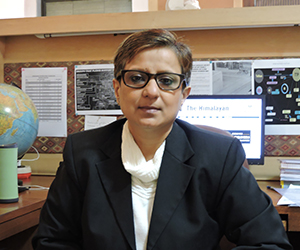


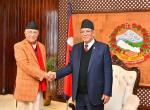
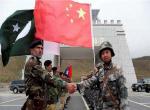

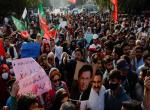
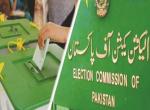
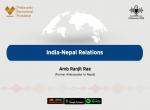
Post new comment